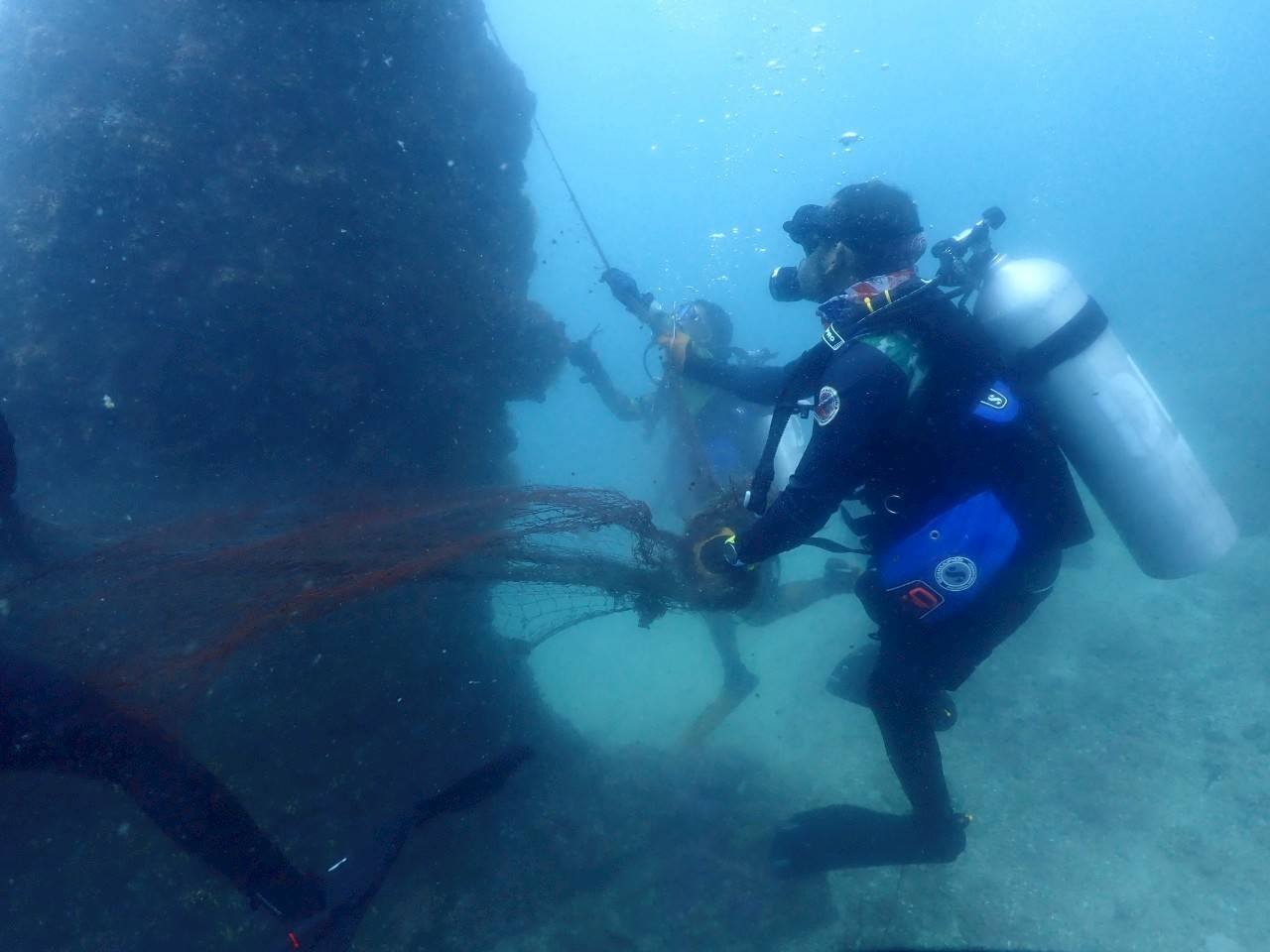On June 30, 2025, officials from Hat Noppharat Thara–Mu Ko Phi Phi National Park successfully removed a 60-kilogram ghost fishing net from the seabed near Laem Phi Phi Le, as part of a wider marine conservation effort. The operation, carried out by the park’s technical and operations teams in collaboration with professional divers and local volunteer divers from Ko Phi Phi Don, aimed to protect marine ecosystems threatened by abandoned fishing gear.
The submerged net, which had entangled part of the coral reef, posed a serious risk to marine biodiversity. Removing such “ghost nets”—a term for lost or discarded fishing gear that continues to trap marine life—is considered critical in restoring underwater habitats and preventing long-term ecological damage.
This underwater operation was aligned with the goals of the Coral Reef and Marine Life Conservation Foundation under the patronage of Her Royal Highness Princess Sirivannavari Nariratana Rajakanya. The foundation focuses on the preservation and rehabilitation of Thailand’s marine resources. A key part of its mission involves the removal of harmful fishing gear, especially from artificial reefs, to prevent degradation of marine environments.
In parallel with the underwater initiative, land-based conservation activities continue. On June 29, the park’s PPA4 (Tubkaek) unit joined forces with the non-profit organization Trust Hero to conduct a coastal cleanup at Ko Klang Beach, demonstrating a growing partnership between public and private sectors to support marine conservation.
Additionally, central patrol units inspected several locations in Krabi province, including Khlong Haeng (Moo 3, Ao Nang), Din Daeng Noi (Moo 6, Nong Thale), Ao Nam Mao (Moo 5, Sai Thai), and Laem Pho (Moo 6, Sai Thai). These inspections, focused on illegal forest activity, found no violations, reflecting increasing community awareness and cooperation in protecting natural resources.
The coordinated efforts underline Thailand’s commitment to preserving its marine and coastal environments through proactive conservation strategies, public participation, and long-term environmental stewardship.




